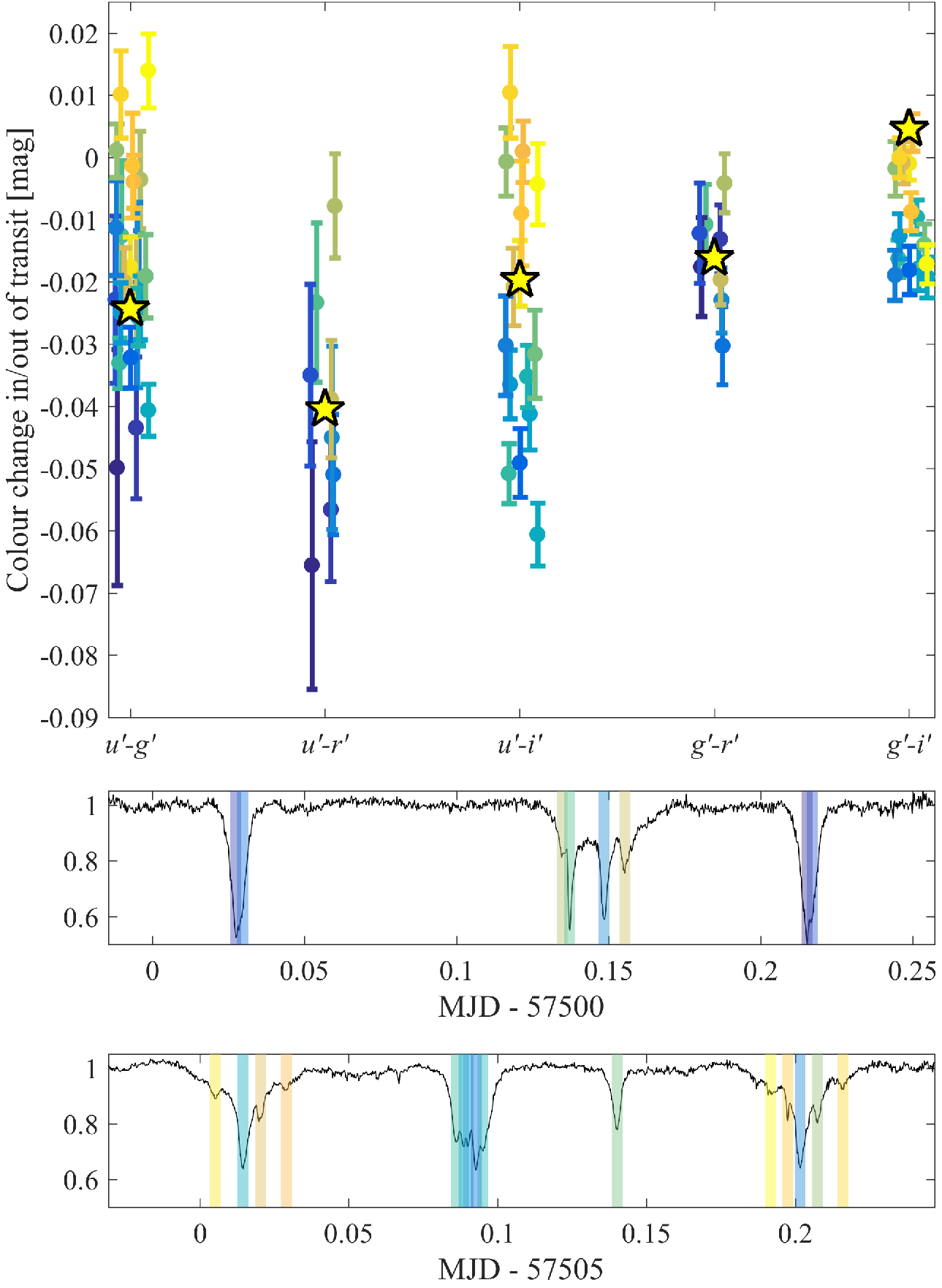Once in a blue moon: detection of ‘bluing’ during debris transits in the white dwarf WD 1145+017

The first transiting planetesimal orbiting a WD was detected in K2 data of WD 1145+017 by Vanderburg et al. 2015 and has been followed up intensively. The multiple, long and variable transits suggest the transiting objects are dust clouds, probably produced by a disintegrating asteroid. In addition, the system contains circumstellar gas, evident by broad absorption lines, and a dust disc, indicated by an infrared excess. Using simultaneous multiband fast-photometry ULTRACAM measurements over the u'g'r'i' bands, we detected for the first time a change in the color of WD 1145+017 during transits. The observations reveal what appears to be ‘bluing’ during transits; transits are deeper in the redder bands, with a u'−r' color difference of up to ∼−0.05 mag. We explored various possible explanations for the bluing, including limb darkening or peculiar dust properties. ‘Spectral’ photometry obtained by integrating over bandpasses in the spectroscopic data in and out of transit, compared to the photometric data, shows that the observed color difference is most likely the result of reduced circumstellar absorption in the spectrum during transits. This indicates that the transiting objects and the gas share the same line of sight and that the gas covers the white dwarf only partially.
For further reading:
- N. Hallakoun, S. Xu, D. Maoz, T. R. Marsh, V. D. Ivanov, V. S. Dhillon, M. C. P. Bours, S. G. Parsons, P. Kerry, S. Sharma, K. Su, S. Rengaswamy, P. Pravec, P. Kušnirák, H. Kučáková, J. D. Armstrong, C. Arnold, N. Gerard, and L. Vanzi "Once in a blue moon: detection of ‘bluing’ during debris transits in the white dwarf WD 1145+017" 2017, Monthly Notices of the Royal Astronomical Society, 469, 3213
- Siyi Xu, Na'ama Hallakoun, Bruce Gary, Paul A. Dalba, John Debes, Patrick Dufour, Maude Fortin-Archambault, Akihiko Fukui, Michael A. Jura, Beth Klein, Nobuhiko Kusakabe, Philip S. Muirhead, Norio Narita, Amy Steele, Kate Y. L. Su, Andrew Vanderburg, Noriharu Watanabe, Zhuchang Zhan, and Ben Zuckerman "Shallow Ultraviolet Transits of WD 1145+017" 2019, The Astronomical Journal, 157, 255